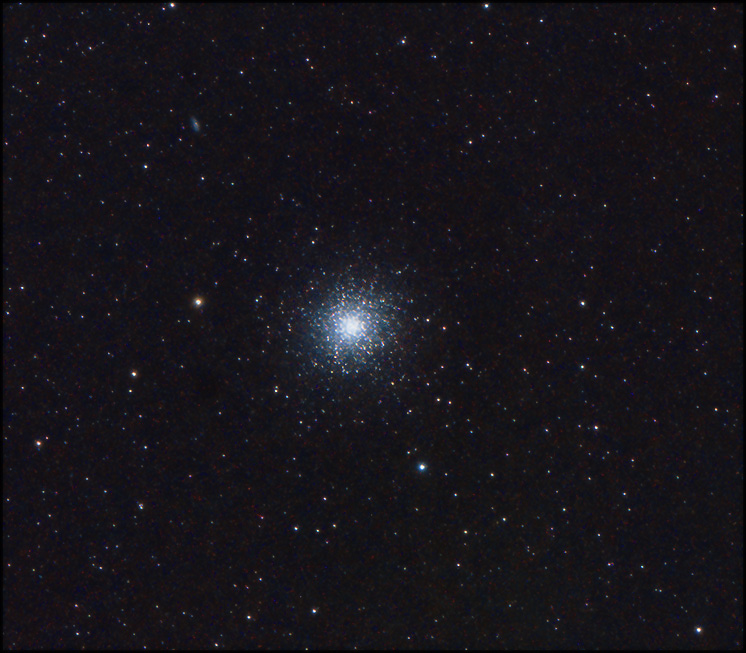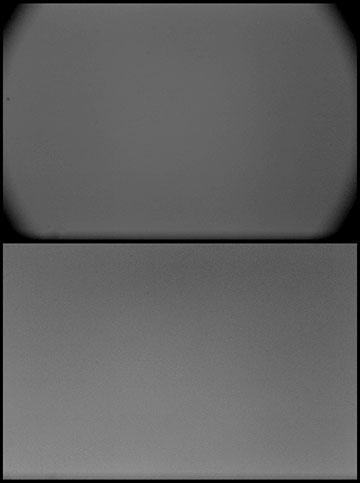Modularized Astrophotography?
8/19/2015. Anybody who has walked across my office (or tried to) knows that organizing my personal space is not among my significant strengths. And yet... there are arenas in which I am organized with the best of 'em. Want to see the source files for a website I did in 2003? Raw images from April 2001? I know exactly where those are.
So the question is: can I get (and stay) organized for deep-sky imaging? Getting out into the dark can only be more or less routine if I don't have to figure out what has to go along, where I last hid it, and where it should be packed every single time.
To that end, I'm simplifying my kit and putting some of it into (mostly) modular cases.
- A deep box (a Dewalt Tstack stackable chest with a removable tray) contains the AT65EDQ mounted on a Losmandy D-plate, with EOS adapter in place, plus the long guide and USB cables to be used in the field (from the RV). AC and DC chargers for the guiding computer are down there as well; maybe they don't make perfect sense there, but this is where the room is.
- In the tray are G11 electronics and sundries, a right angle viewer for a DSLR, a release/intervalometer, the Bahtinov mask for the AT65EDQ, and a flashlight. More coming, for sure.
- A flat box, another Dewalt stackable, attached to (1), is devoted to guiding hardware: Asus computer, short guide and USB cables, Meade DSI Pro, interchangeable 50mm guide 'scope and 8x50 RACI finder, a GPUSB adapter. The computer is in its neoprene sleeve along with a red screen filter.
- A large Galen Rowell camera case holds the widefield kit consisting of the iOptron SkyTracker, accessories like the extension for southern targets (previous page) and parts for the work-in-progress dual camera conversion, also an assortment of mostly Nikkor lenses, remote releases, etc.
- The Slingshot camera case, carries (as usual) "ordinary" lenses and lots of batteries and chargers.
I should probably sneak another remote release in here just in case; just as I need to slip a 12v DC charger for each style of Canon battery into the Tstack somewhere.
- A soft
Kendrick battery pack provides power for the mount. There's a DC electrical cable in the pouch for the G11 and SkyTracker. More specialized cables can stay with their associated gear (STV, Asus, D820...).
Garbage bags come in handy for padding, sitting, screening. The camera bodies don't have a home yet; they end up being carried on their own. Not the best idea. Another flatbox perhaps? Try it all out in the cul de sac and then at The Lump, that nearly ideal stargazing overlook on the Parkway about 20 miles north of Blowing Rock. No need to go all the way to Doughton Park. Try it out at Happy Valley, too. It's all green-zone astronomy (if you want significantly better skies, it's Ocracoke, New Mexico, or maybe the Grayson Highlands, so save some bother).
Consider a Pelican 1510 "carry on" case with dividers to get the AT65EDQ and guide kit to and from the west, but don't think too far ahead. The Messenger bag may do the job just fine. First, let's define what needs to be IN the kits without worrying too much about air transportation and what needs to be stashed on which side of the big river. By and by, add a couple of high capacity SD cards (Lexar 128 or 256GB would be nice --but work out what's needed for several nights in the field and go from there). See remarks about getting ahead of the game.
As I type, I'm doing a (poor) rundown test on the Asus computer. Charged it to 100%, configured some modest power saving strategies (wifi and bluetooth are off, screen off in 5 minutes, disk in 15; that could be more aggressive if it matters), and am letting it sit. Granted it's not doing much but sleeping. When it is run down, we'll see how long the Kendrick pack takes to recharge it and how much of a hit the pack takes in doing so. Routinely, I'd expect to use a bigger battery for computer recharging, but it will be good to know what the little Kendrick can do --in part because it will be easier to see the effect charging the computer has on it than on a big honkin' battery, and the hit on the big battery can be approximated from the hit on the little one. And oh yeah, I need to put one of those computer-desk cable access widgets (the word you're looking for is "grommet" and one is on the way) in the aft dinette seat base so I can run power, guiding, and USB cords from the RV table out to the rest of the universe without looking like I'm making it up as I go.
Run time: 0h00m: 100%
7h30m: 27%
8h30m: 10% (Plugged in.)
At the start of charging, the Kendrick showed 12.74v with nothing plugged in.
I left the computer on while recharging so I could monitor the state of the 4800mAh battery. Voltages are what the Kendrick reports.
| Charging: |
0h00m 10%, 12.74v |
| |
0h35m 38%, 12.24v |
| |
1h00m 60%, 12.10v |
| |
1h30m 76%, 12.03v |
| |
2h30m 92%, 12.10v |
| |
3h00m 100%, 12.12v (12.19v computer off, 12.25v unplugged) |
8/29/2015. Time-warp. I bought a bigger battery (7200 mAh) for the Asus which arrived in an admirably discharged state. I'm recharging it from the slightly depleted Kendrick battery pack, a reasonable simulacrum of actual field conditions:
| Charging: |
0h00m 02%, 11.80v (under load, computer on) |
| |
1h00m 34%, 11.28v |
| |
1h30m 41%, 11.22v |
| |
2h30m 100%, 11.22v (11.45v computerr off, 11.57v unplugged) |
[End time warp; we'll do a run-down test on the new battery another time]
Next: try the rundown tests with the DSI guiding the G11. Draw should be roughly doubled [nope, rather less than doubled actually, see below]. Ever just get sick of testing and preparing and just want to get on with it? Me, too.
8/21/2015. Talk, talk, talk --let's take a picture. I stole a couple of hours between twilight and clouds, the first quarter Moon be damned. The Dewalt stack, the Kendrick battery (for the G11) and the Canon 6D went out the door to pretend we are in the great beyond under a darker sky.

It's a wide, sharp field:
this is ~12% of the original frame shown at full scale.
M13
8x180s (total 24 minutes)
AT65EDQ, Canon 6D @ iso 1600
G11 guided by PHD2 on the new Asus
First item: the guider wouldn't focus. Not enough in-travel by a mm or so. I discovered that the 50mm guidescope focuses by threading the objectiive in and out. Alas, it was already at limit in. I removed the stop-ring and got another turn or so which produced useful but still defocused stars. I calibrated PHD2 on a field somewhere near M13 and proceeded on. [The fix: replace the 1.25" snout with the one I turned down on the lathe for just this problem some ages ago. Done! Works like a charm.]
Second: Critical focus with the Bahtinov mask is really easy. Yay. Total success there.
Third: Aiming is not as easy it ought to be and never mind the wide field of the full-frame sensor and the mere 420mm focal length. I fumbled my way to M13 and then ran an hour's worth of 3-minute exposures while clouds rolled through. Eight frames were useful. The rest were blown out by bright city-light reflected from the passing clouds. The guiding never wavered. [The fix: the 8x50 RACI guider I had on the dual 'scope Losmandy platform beside the ST80 has a stalk whose foot fits the same holder the guidescope uses. Just slip the guidescope off, mount the finder in its place, and aim. Once in the ballpark, put the guider back and go for it. If you're just a little careful, recalibration is not needed.]
So much for star tests. How about the cloud test? Everything packed up easily enough to close up shop and come inside in a single trip. I confess I did spend a few minutes redistributing and repacking some toys after I got inside, but all in all, not a bad star trial. [Thought: how about white paint or contact paper in the boxes and trays so I can see what's where in the dark?]
The good news: The computer used only 30% of its capacity in two hours while powering and taking guide data from the USB-connected DSI camera via PHD2 software. The screen was off most of that time. That implies it wouldn't fade to below 10% in six hours. Good deal. Note that the same would be true if the imaging telescope were the 10" F4 Newtonian. Low power consumption is key. Guiding is solved! For everything. But do consider a higher capacity battery for the Asus while they're available. [Mine's a 4800mAh battery; a 7200mAh is on the way. That should provide 8-9 hours of guiding and be easily recharged during the day.]
The Kendrick used hardly any of its capacity driving the G11 for two hours, as expected. It holds an 18AH battery and the G11 draws only about 500mA. In fact, the battery shows more v's now than when I finished recharging the Asus from it. There's already a 100AH deep-cycle battery in the RV to supplement the truck and house batteries for whatever is needed. Put one of the spare / retired car batteries in the back of the Honda for similar duty on shorter observing forays and dedicate the Kendrick to driving the mount. And don't forget that there's 60w of solar in the RV, too, which should be enough to keep the Kendrick topped off. Power suddenly seems plentiful.
8/22/2015. Minor jostling broke the nosepiece / filter slide holder off the Meade DSI Pro (again). This time I put it under the drill press to deepen the countersinks that limit the penetration of the four tiny, fine-threaded bolts that hold it in place. And I sanded off the detents on the bottom of the bracket. And I applied Superglue to the bracket (not to the bolts). And rather than use a blacked-out filter slide (adopted to make acquiring dark frames with the off-axis guider easier) I just taped up the sides of the slide holder. And used black tape to improve strain relief of the USB wire. All in all, it's now a vastly more solid connection and a more compact contraption.
Also: one of the two nylon collimation screws snapped on the finder. I replaced both with metal 6x1mm metric screws (I think --the ones that get stripped when people imagine them to be 1/4x20's). I am waiting for darkness and a hazy try at the North America nebula. I'm also giving some thought to making an RA extension for the G11 so it can cross the meridian.
Maddeningly persistant local clouds are interfering with imaging tonight. So I used the overcast to shoot some flats using the Canon 6D and a wide-mouth EOS adapter to compare with those made with a standard T-adapter. The vignetting using the T-ring has seemed minor and easily handled, but look at the difference. The wide-mouth flat is on the bottom:

These are unstretched. Analysis of a gray-scale conversion of the original data shows that the corners of the t-adapter flat are 41% dimmer than the center. The corners of the wide-mouth flats are only 3% dimmer than the center. Both would be easily correctable, but most images with the wide-mouth adapter wouldn't need correcting. When stretched, there's a narrow band along the bottom. I suspect it's the shadow of the retracted mirror. The resultant dimming is unmeasurable in an 8-bit JPEG and easily flatted out (or ignored or cropped) in images with greater bit depth. Here's a reduced scale rendition of the same two flats stretched without mercy using "curves" in Photoshop:

Even when it's cloudy outside, I'm learning something about this game.
Except where noted, deep-sky photos are made with an SBIG ST2000XM CCD behind a 10-inch Astro-Tech Ritchey-Chretien carried on an Astro-Physics Mach1GTO. The CCD is equipped with Baader wide- and narrow-band filters. The internal guide chip of the CCD most often keeps the OTA pointed in the right direction (I'll let you know when an OAG or guidescope takes its place). Camera control and guiding are handled by Maxim DL 5.12. The stock focuser on the AT10RC has been augmented with Robofocus 3.0.9 using adapters turned on the lathe downstairs. A Canon 6D and a modded 50D find themselves mounted on an Orion 10" F4 Newtonian or carrying widefield glass on an iOptron Skytracker. Beginning in May 2013, PixInsight has taken over more and more of the heavy lifting -- alignment, stacking, gradient removal, noise-reduction, transfer function modification, color calibration, and deconvolution. Photoshop CS4 et seq and the Focus Magic plugin get their licks in, too.
:: top ::